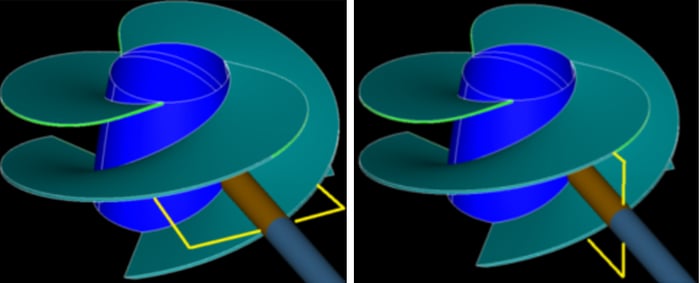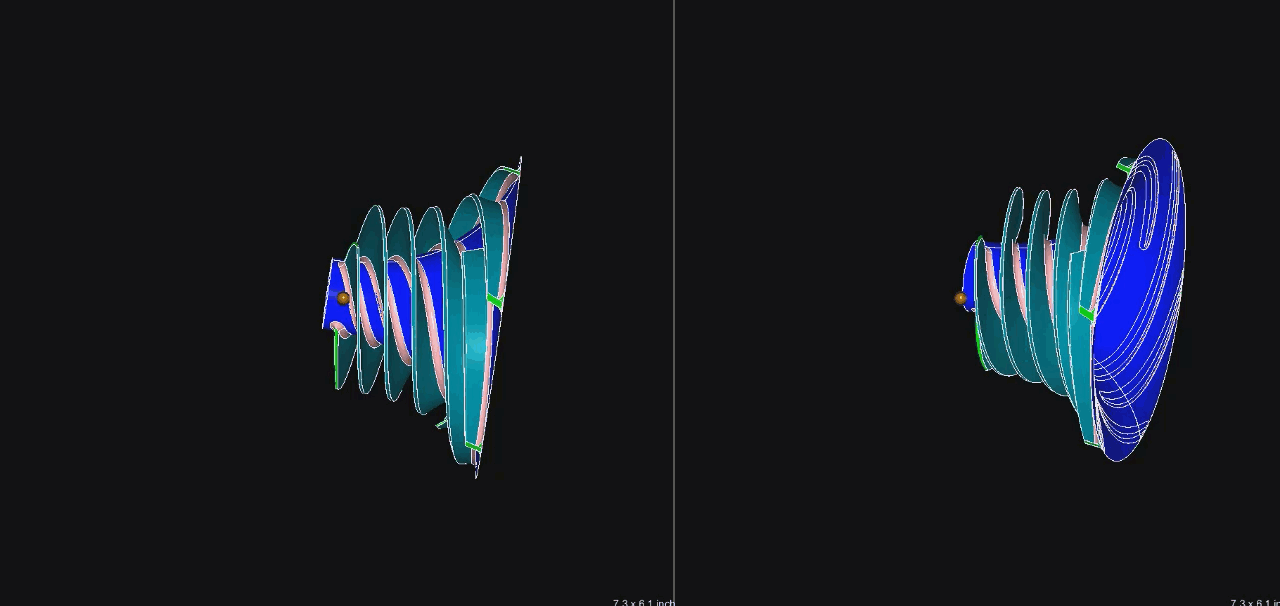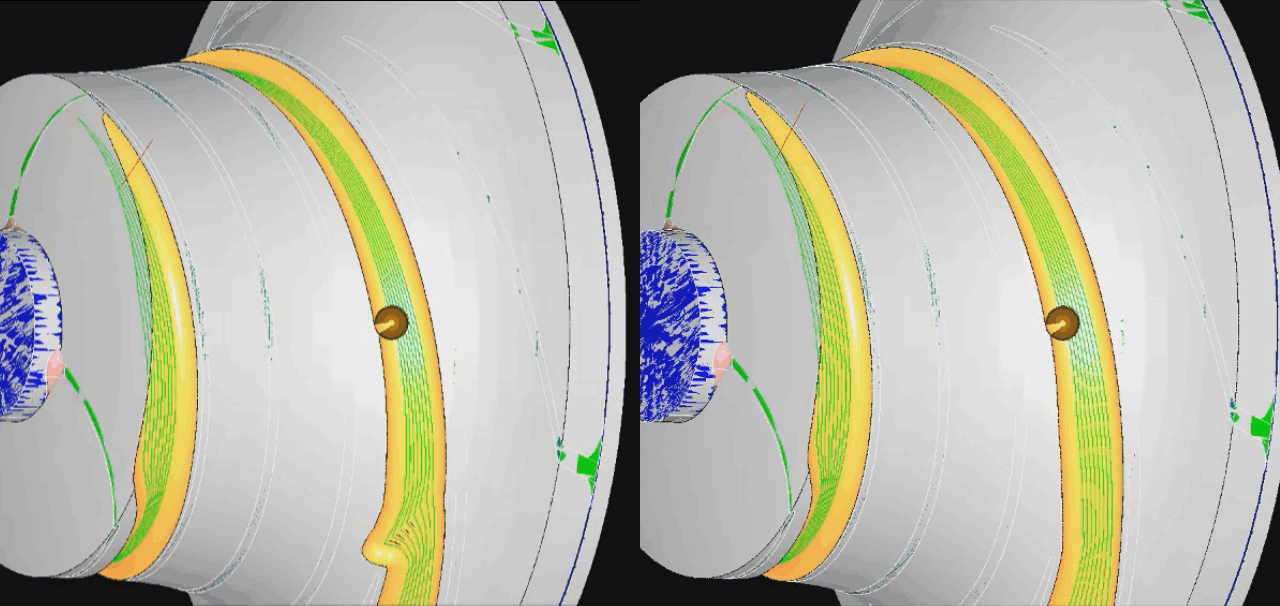Turbopumps pose many challenges when trying to manufacture high quality CNC toolpaths. They are often made of difficult to machine materials such as Inconel, have sharp leading edges, demanding tolerances, and it is tricky to find tool orientations that are safe and smooth – especially in the inducer section.
Concepts NREC’s collision avoidance algorithm was designed to find a safe position by rotating the tool within a plane. For impellers and axial geometry, a horizontal plane works very well, but this starts to break down with highly wrapped inducer geometry. To solve this problem, we added a vertical plane option specifically for turbopump and inducer geometry so that users working with these geometries can also benefit from our collision avoidance strategies.

Horizontal tilt-plane (left), and vertical tilt-plane (right)
The GIF below compares the two methods side by side. Look at how much smoother the motion is on the vertical plane option. This guarantees you smooth machine motion and high quality results.

Vertical tilt-planes produce smooth motion (left), horizontal tilt-planes produce irregular motion (right)
Another issue that you will find on roughing toolpaths with turbopumps is excessive radial tool engagement when the tool is wrapping around the leading edge of the splitter. This sort of engagement could squeal, break a tool, or worst case push the tool into the leading edge and gouge the part. To avoid this, we recommend working with triangular extensions at the leading edge. This feature prevents the tool from wrapping around the LE during roughing. After your initial operations, a few clean up passes are needed to even out the remaining stock prior to finishing, but the additional passes are worth it as they will save you many headaches during roughing.

Large radial engagement without triangular extension (left), consistent radial engagement with triangular extension (right)
These are just a couple of ways MAX-PAC enables success for the unique challenges of turbopump and inducer geometry. If you are a subscriber to Agile Product Support and are interested in learning more about how to tackle challenging turbopump and inducer geometry, check out this talk by application engineer Christos Maninos from our 2022 User Group Meeting. If you are not an APS subscriber but would like to learn more, please contact us to discuss your application.







